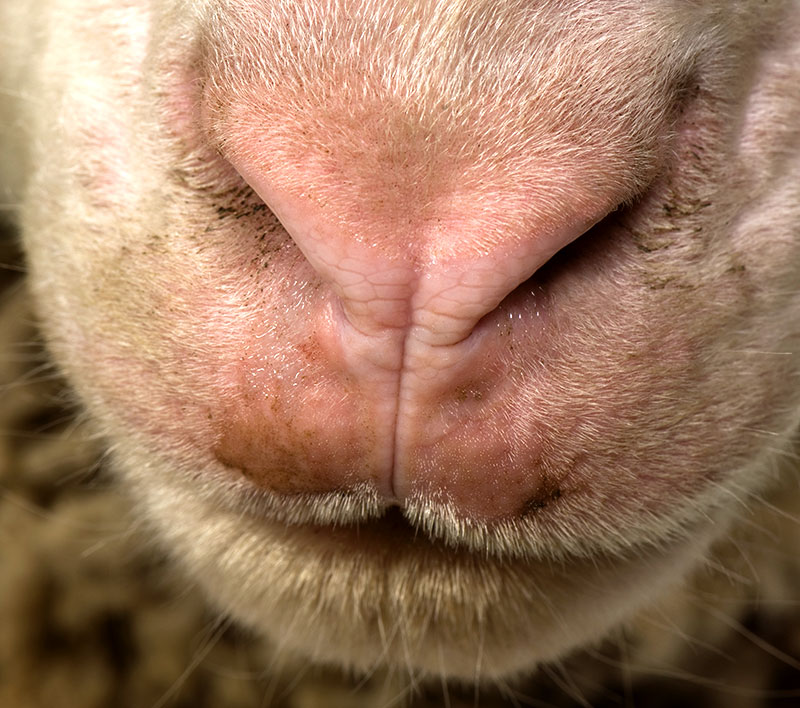
Let’s take the next two columns to discuss how some of the different livestock species perceive their environments through their senses.
Understanding how animals view the world, after all, helps shape our interactions with them and can improve their quality of life. In this first part, let’s consider how various livestock use their senses of smell and taste.
Smell
Mammals use olfaction, or sense of smell, to find food and avoid danger. Some species also use it to know when to mate.
Dogs, and particularly hounds, might come to mind when thinking of domestic animals with great sniffers. Perhaps cattle, horses, sheep and goats don’t pop up as examples.
In fact, all mammals have a superfamily of genes in their genomes that code for olfactory receptors.
Let’s break this down a bit. When you or your goat smell something, here’s what happens. You inhale volatile molecules in the air that make up the scent, and these bind to special receptors, made of proteins, in the nose.
These receptors send signals via neurons to the brain to interpret the message of the smell. Genes in the mammalian genome contain codes for the proteins that make these receptors.
Because of this mammalian superfamily, a lot of olfactory receptors exist across the different species.

Diverse Sniffers
In 2013, researchers completed a whole genome analysis of the bovine genes making up a cow’s olfactory system. They concluded that a bovine’s sense of smell is similar to that of a pig.
This is interesting because research has demonstrated that swine olfaction is quite diverse. It suggests that the cattle on your farm might be detecting more things by nose than you might realize.
This is vital for survival. For example, on large ranges and in the wild backcountry, an herbivore’s ability to detect water sources is based largely on the sense of smell.
Horses, too, have an acute sense of smell. In a 2018 study, researchers found the essential oil lavender decreased physiologic signs of stress in 10 horses exposed to an external stressor.
This suggests horse owners might consider aromatherapy for helping reduce stress in their equines.

The Flehman response is an exaggerated behavioral reaction to certain scents. It’s most typically exhibited in horses with the characteristic neck extension and upper lip raised to reveal the incisors. This movement allows a smell to pass a specialty smell mechanism called the vomeronasal organ.
This specialized chemosensory structure is found in many mammals. Stallions exhibit this response when a mare is in heat. Mares and geldings do it, too, when encountering novel smells such as a new food or a strange horse’s urine or feces.
Taste
Smell and taste are related. So what are the palates of our domestic livestock like?
Perhaps you’ve had experience with a picky eater at the barn. Horses in particular can be fussy with aberrant flavors of feed and water.
When traveling, some horses will refuse “different” water because of its unfamiliar smell. For this reason, horse owners are sometimes advised to spike the horse’s drinking water with peppermint or a small amount of powered Gatorade to cover any “foreign” tastes or smells.
A grazing animal’s sense of taste helps it avoid toxic plants. Many harmful weeds in a pasture are bitter, so even the most oblivious grazer avoids them. That is, unless there is no other source of roughage around.
Not surprisingly, horses, sheep, goats and cattle have chemoreceptors for salt, sweet, sour and bitter tastes just like humans do.
This, in combination with their acute sense of smell also means these species are adept at suspecting when a feed or treat contains medication, which is typically bitter. Administering oral medications to any animal can sometimes be a war of volatile compounds.
Choosing which heavily scented treat to mask a pill or powder can be challenging. Apple flavor, peppermint, peanut butter and molasses are some helpful tastes to try when hiding the archetypal bitter pill to swallow.
It’s better to work with animals’ senses of taste and smell than against.




